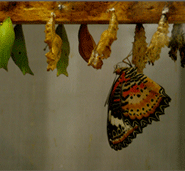Every human body has a hunger drain. It is the convoluted, elongated, whimsical and indispensable intestine. The hunger organ is quite similar to its relative, the kitchen drain, which also constipatedly clogs and flushes everything that’s poured down it regardless of what it’s fed – be it caviar, bheja-fry, candy or tomatoes.
The comic horror of gluttony, hunger and consumption associated with the genetic modification of tomatoes can be attributed to tomatoes being the highest vegetarian umami food. Umami, described as a long-lasting, mouth-watering sensation coating the tongue, has an effect and ability to balance taste and round up the flavour of a dish to satiate hunger pangs.
The tomato, compulsively consumed, compliments anything it is combined with, making it a want of hunger rather than a need. Siddhartha Karawal’s salivating ‘Tomato Masher’ has elements of umami, which reflect on the modifications and genetic interventions that food plays with – be it in the form of butter chicken, penne arrabiata or fries doused in tomato ketchup.
Amartya Sen won his 1998 Nobel Prize in part for his work in demonstrating that hunger in modern times was not typically the product of a lack of food; rather, hunger usually arose from problems in food distribution networks or from governmental policies in the developing world. Incidentally, tomatoes were the first commercially grown, genetically modified food (1994). Along with this rose the politics of hunger, waste, trash, junk, consumption and government policies. Politics itself is often referred to as fodder for the hungry – where when power corrupts it corrupts absolutely – and to get a job done one often has to “khilao” (feed / bribe). When one runs out of material, fuel, paper, it is always fed into the related machine or system, thereby correlating the action to that of slaking hunger.
A trademark of Karawal’s style, the visual simplicity and humour prevalent in the ‘Tomato Masher’, has underlying tones that comment on the artist’s concerns of the environment around him. Having lived as an artist in the dry-state of Gujarat since 2002, which has one of the highest drunken deaths (due to proliferating moonshine), his work subtly comments on situations that mock cold facts.
Karawal decontextualizes the mundane, layering it with meaning. His use of medium adds to his imagery sarcasm, be it the use of plastic bags, foam sheets, metals and fibre or satin, cotton and fire-crackers. Some of these mediums immediately remind one of discarded materials and waste. Waste is linked to human development, primarily via technology and social consumption. The ‘Tomato Masher’ is a literal result and composition of the intestinal waste in relation to the perceptions of taste and hunger through the predating evil tomatoes. The beauty and sheer luxury associated with the luring pink satin, sneaks out animated liveried hands, which seem to create a chain, feeding the eerie pink-lipped ‘Tomato Masher’, whose constantly open mouth consumes the global tomato.
The intestine, which is looked at as the waste organ, is the root cause of hunger. In some countries, and cuisines, pork entrails containing intestines in their pure form are deliciously devoured. Then there’s our intestine, which will do what the ‘Tomato Masher’ does – consume continuously and digest – mashing up evil genes, hunger, over consumption and the indigestible junk. The Attack and Return of the Killer Tomatoes, reminiscing Warhol’s Campbell soup cans in the created beauty of fabric consumption is back again in Siddhartha Karawal’s convoluted silk intestine, ‘Tomato Masher’. The social acceptance and conditioning of hunger and desire is contained within the universal cuisine of the tomato, a universal gourmet food, creating universal waste.
The ‘Tomato Masher’s’ free-floating, laughing jaw-set is what the hunger drain thrives on. In the kitchen, this set of pearly-white teeth and smeared lips adopt the form of pots and pans that act as magnets of tomato puree, and matching ingredients to make it palatable for the more sensitive but never ending human desire to eat in any form. The evil tomato wins, as the intestine-drain attempts a futile transmogrification into a ‘Tomato Masher’. This work of Karawal’s extends one’s imagination into the evil Professor Gangrene’s super-human tomatoes, which are on a mission to destroy the world. Refuting this, Karawal’s smooth as silk intestinal ‘Tomato Masher’, makes luscious the pumping sink of the kitchen of our bodies.
Veeranganakumari Solanki is a curator living and working in Mumbai.
Siddhartha Karawal is a sculptor living in Baroda and creating havoc everywhere.
Editor's Note.
This year, The Fuschia Tree's issues tackle 'The Unseen': seemingly invisible and tangential ideas that change the course of our lives. We began the month of February with Love. Of course. The most obvious and the most elusive of the unseens. Our current issue is on the thing that feeds our desire to love: Hunger.
Read More
By Veeranganakumari Solanki, Issue 18, Hunger, February 2013
Also in this issue
Illusion: Seeing Beyond Seeing
Meaning: In Search of Significance.
Melody: A Different Tune
Rhythm: Ordering Time






